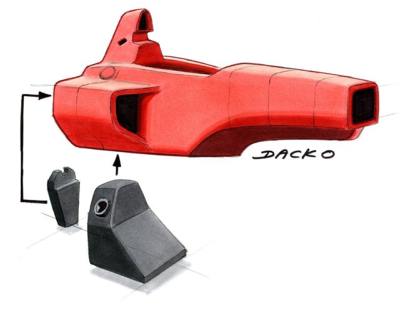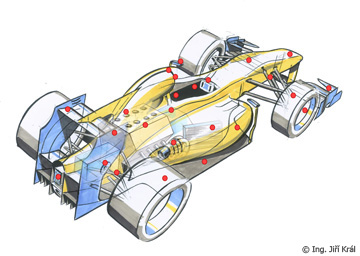Fuel and oil tank
sanco | 18.3.07 | Nádrže
F1 constructor
The F1 fuel tank is often considered to be the most beneficial part in all history of motorsport from the safety point of view. The rupture of the aluminium tank and consequent fuel leak lead to many fatal accidents in number of car racing disciplines, including the F1. Therefore the constructors and organizers paid a lot of attention to this problem. In 1970 their effort lead to the first really safe fuel tank. The current ones are derived closely from this original. For safety reasons this particular part is required to comply with very strict FIA regulations and it is practically identical in all cars. The fuel tank is designed as one-part rubber bellow, which allows it not only to withstand extreme deformations but it is also virtually unpiercable. Moreover, it is installed inside the carbon monocoque between the driver and the engine being protected by firm walls from all sides. To maximize the protection it is fitted inside the body from bellow. The space for installation is finally covered by the carbon part of the chasis - the working plane.
 |
The fuel tank is literally encased by a safety structure of the monocoque. The installation behind the driver brings two advantages. Firstly, it concentrates the mass of the fuel to the car's centerline. Secondly, it utilises the complicated but otherwise useless space. Its shape copies the driver's seat declination and it looks like a big trihedron. Its capacity is kept secret, however, the estimate is about 95 to 120 litres. Behind the rear monocoque's wall, there is another, smaller tank, which is the oil reservoir. To save space and keep the minimal distance from the engine, the oil tank is installed into a deep recess on the outer part of the rear monocoque wall. The tanks are therefore separated by the firm monocoque wall and a layer of insulation, which stops the engine heat from leaking in. Having been installed into its place, it is hidden under the engine that is mounted to the rear wall by several screws. Consequently, the only thing you can see is the filler neck.




